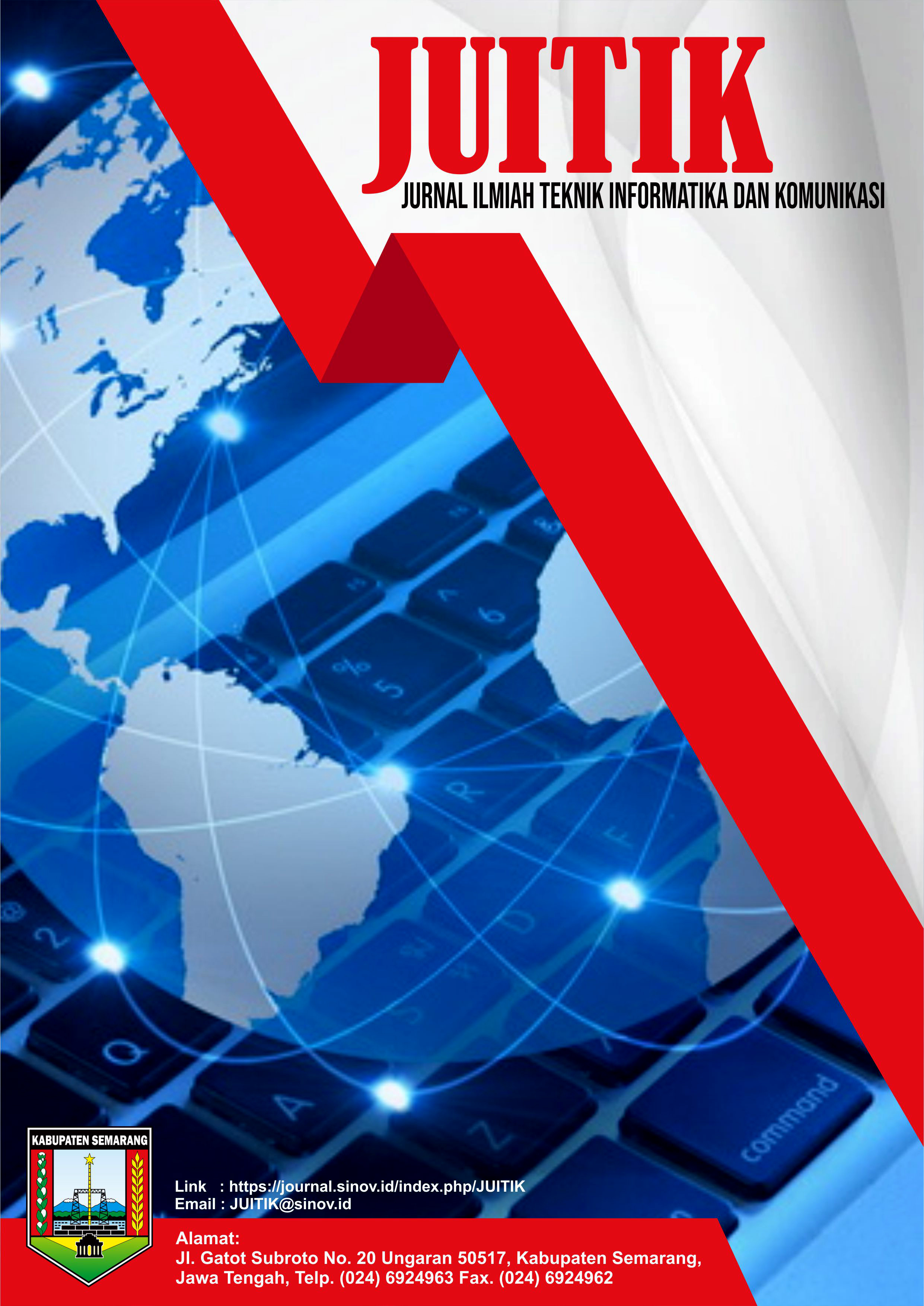Aplikasi Android Pengenalan Klasifikasi Hewan Berdasarkan Jenis Makanan
DOI:
https://doi.org/10.55606/juitik.v5i3.1706Keywords:
Animal Classification, Android Applications, Agile Methods, Interactive Education, Computer VisionAbstract
This research focuses on the development of an interactive educational Android application for animal classification based on their diet: herbivores, carnivores, and omnivores. The application leverages advances in deep learning and computer vision to analyze input images, distinguish morphological characteristics relevant to diet, and accurately identify and classify animal species. By adopting Agile methods, the project ensures flexibility in adapting to changing needs, enhances team collaboration, and enables iterative feature delivery with rapid feedback. The application is designed to engage users, particularly children and adolescents, through two main features: a "reading" menu that presents detailed and engaging visual information about animals and their dietary classifications, and an interactive "quiz" menu to test user understanding. This approach addresses the limitations food type data, and successfully trains and tests classification models. This success confirms the app's potential as an effective and engaging learning tool for introducing animal classification concepts, while of manual identification methods and the lack of relevant interactive educational tools in the current educational landscape. Test results indicate that the app performs well in managing animal and also supporting wildlife monitoring and conservation efforts by providing an accessible and user-friendly platform.
References
Bumbak, I. (2018). Software development methodologies on android application using example. Polytechnic of Sibenik. Management.
Francis, L., Spaulding, E. M., Patel, A., & Perrin, N. (2023). A systematic appraisal of the information, engagement, aesthetic and functional quality of nutrition-related smartphone apps for children and adolescents. Public Health Nutrition, 26(7), 1368–1379.
Harano, T., & Asahara, M. (2022). Correlated evolution of craniodental morphology and feeding ecology in carnivorans: a comparative analysis of jaw lever arms at tooth positions. Journal of Zoology, 318(2), 135–145.
Knez, S., & Šajn, L. (2020). Food object recognition using a mobile device: evaluation of currently implemented systems. Trends in Food Science & Technology, 99, 460–471.
Nabavizadeh, A. (2022). Evolutionary Innovations of the Feeding Apparatus in Herbivorous Dinosaurs. The FASEB Journal, 36.
Ocampo, M., Pincheira-Donoso, D., Sayol, F., & Rios, R. S. (2022). Evolutionary transitions in diet influence the exceptional diversification of a lizard adaptive radiation. BMC Ecology and Evolution, 22(1), 74.
Parkavi, A., Shetty, T. B. N., Raj, V. A., Upadhyaya, S. B., & Thairani, R. (2023). Android application for food label recognition to ensure safe food consumption based on user allergen information leveraging OCR. 2023 14th International Conference on Computing Communication and Networking Technologies (ICCCNT), 1–6.
Pontes, S., Custódio, S., & Graça, P. (2020). Instrumentos de educação alimentar e nutricional para crianças em idade pré-escolar: necessidades e desafios atuais. Millenium-Revista Do Instituto Politécnico de Viseu (IPV), 2(13), 81–88.
Regan, M., Chung, S.-Y., Sofoluke, T., Rahmaty, Z., Zhang, G. M., Zvenyach, T., Ryan, A. S., Storr, C. L., Johantgen, M., & Hunter, C. (2020). Foodfoto: A systems thinking approach to dietary intake collection, storage and analysis. CIN: Computers, Informatics, Nursing, 38(6), 265–272.
Reuter, D. M., Hopkins, S. S. B., & Price, S. A. (2023a). What is a mammalian omnivore? Insights into terrestrial mammalian diet diversity, body mass and evolution. Proceedings of the Royal Society B, 290(1992), 20221062.
Reuter, D. M., Hopkins, S. S. B., & Price, S. A. (2023b). What is a mammalian omnivore? Insights into terrestrial mammalian diet diversity, body mass and evolution. Proceedings of the Royal Society B, 290(1992), 20221062.
Savitri, N., Aris, M. W., & Supianto, A. A. (2019a). Augmented reality application for science education on animal classification. 2019 International Conference on Sustainable Information Engineering and Technology (SIET), 270–275.
Savitri, N., Aris, M. W., & Supianto, A. A. (2019b). Augmented reality application for science education on animal classification. 2019 International Conference on Sustainable Information Engineering and Technology (SIET), 270–275.
Silalahi, D. T. I., Sari, I. M., & Noviyanti, T. (2024). Aplikasi Pembelajaran Interaktif Hewan Endemik Nusantara Berbasis Android. Switch: Jurnal Sains Dan Teknologi Informasi, 2(4), 56–70.
Sitompul, E., & Hutabri, E. (2023). Perancangan aplikasi resep masakan tradisional indonesia menggunakan pendekatan agile process dengan model extreme programming berbasis android. Computer and Science Industrial Engineering (COMASIE), 9(8).
Widayanto, A., & Refianti, L. (2018). Aplikasi Pembelajaran Huruf, Angka, Warna, Hewan, Sayur Dan Buah Berbasis Android. Jurnal Khatulistiwa Informatika, 6(2), 487351.
Wu, Y. (2022). Diet evolution of carnivorous and herbivorous mammals in Laurasiatheria. BMC Ecology and Evolution, 22(1), 82.
Zhang, Q., He, C., Qin, W., Liu, D., Yin, J., Long, Z., He, H., Sun, H. C., & Xu, H. (2022). Eliminate the hardware: Mobile terminals-oriented food recognition and weight estimation system. Frontiers in Nutrition, 9, 965801.
Downloads
Published
How to Cite
Issue
Section
License
Copyright (c) 2025 Jurnal Ilmiah Teknik Informatika dan Komunikasi

This work is licensed under a Creative Commons Attribution-ShareAlike 4.0 International License.













